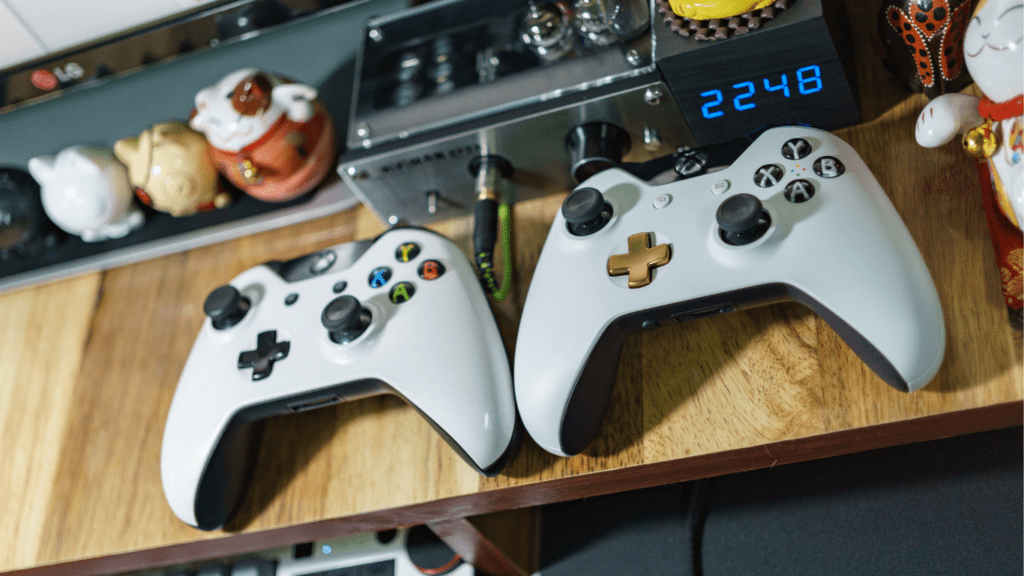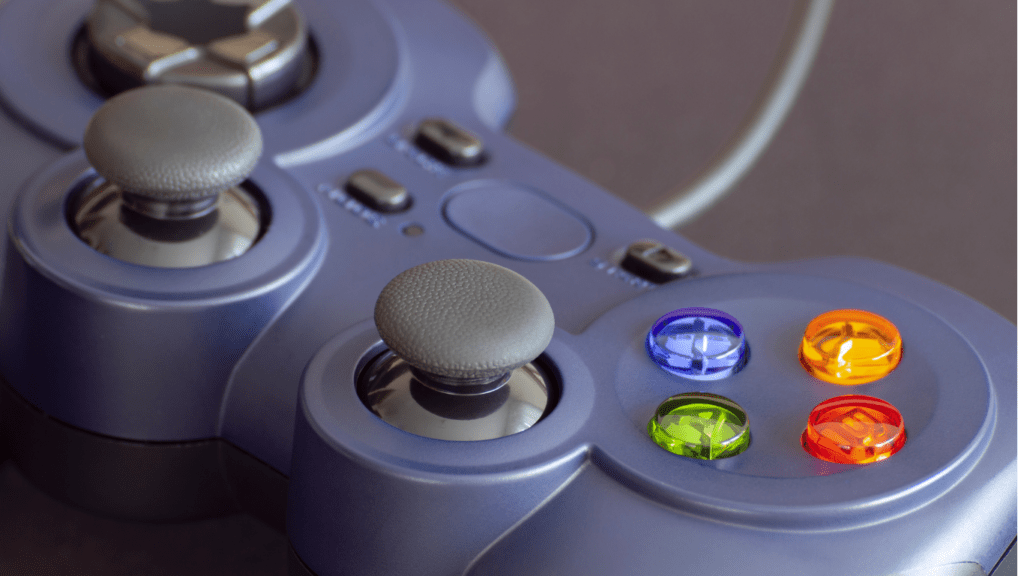Evolution of Console Hardware
From Past to Present
Console hardware has come a long way since the early arcade machines. Initial consoles like the Atari 2600, released in 1977, featured 8-bit processors and rudimentary graphics capabilities.
The 1980s brought the Nintendo Entertainment System (NES), which introduced a more sophisticated 8-bit architecture and cartridge-based games, setting a new standard for home gaming.
In the 1990s, consoles like the Sega Genesis and Super Nintendo Entertainment System (SNES) transitioned to 16-bit processors, enhancing graphical fidelity and game complexity.
Sony’s PlayStation, launched in 1994, marked a significant leap with its 32-bit processor and CD-ROM storage, enabling better graphics and longer games.
The early 2000s saw the introduction of 128-bit systems like the PlayStation 2, Xbox, and Nintendo GameCube.
These consoles featured improved 3D graphics, increased storage capacities, and online capabilities.
The Xbox 360 and PlayStation 3, introduced in 2005 and 2006 respectively, brought HD graphics and robust online services, changing the landscape of multiplayer gaming.
Key Innovations in Previous Generations
Key innovations have consistently pushed console hardware forward. The D-pad, introduced by Nintendo, changed game controls, providing more responsive gameplay.
Sony’s PlayStation popularized the use of CDs, which offered greater storage than cartridges.
The sixth generation saw the advent of DVD-based games, with the PlayStation 2 incorporating a DVD player, turning a gaming console into a home entertainment system.
Microsoft’s Xbox, with its internal hard drive, enabled game saves directly on the console, eliminating the need for memory cards.
In the seventh generation, the inclusion of HD capabilities and HDMI outputs, as seen in the Xbox 360 and PlayStation 3, provided unprecedented graphical quality.
The introduction of motion-sensing technology via the Nintendo Wii revolutionized how players interacted with games, engaging a broader audience.
High-definition graphics and advanced online services were standard by the eighth generation.
Features like Blu-ray compatibility in PlayStation 4, and Xbox One’s integration with live streaming services, highlighted the convergence of gaming and online media consumption.
Core Features of Next-Gen Consoles
Enhanced Graphics and Performance
- Next-gen consoles push graphical and performance boundaries, delivering unprecedented visual fidelity and smooth gameplay.
- Advanced GPUs with ray tracing capabilities render lifelike lighting, shadows, and reflections in real-time. This results in highly immersive environments and realistic character models.
For instance, the PlayStation 5 and Xbox Series X boast GPUs based on AMD’s RDNA 2 architecture, enhancing their graphical prowess.
- Rapid load times and seamless transitions keep players engaged, thanks to solid-state drives (SSDs) integrated into these consoles.
These SSDs drastically reduce loading times compared to traditional hard drives, enabling near-instant game launching and fast travel within games. With data transfer speeds reaching up to 5.5 GB/s on the PS5’s SSD, gameplay flows smoothly without interruption.
Cooling Systems and Energy Efficiency
- Cooling systems in next-gen consoles are vital for maintaining optimal performance.
- Advanced cooling mechanisms, including custom-designed heat sinks and high-efficiency fans, prevent overheating during extended gaming sessions.
The Xbox Series X, for example, employs a split motherboard design to better manage internal temperatures. Efficient airflow channels through the chassis, ensuring consistent performance.
- Energy efficiency is another critical feature. Manufacturers have designed these consoles to minimize power consumption without sacrificing power. Techniques such as dynamic voltage and frequency scaling (DVFS) adjust power usage based on current demand.
This approach reduces energy wastage and contributes to a greener gaming experience. For both performance and environmental concerns, these innovations represent significant advancements.
By integrating these core features, next-gen consoles offer a substantial leap in gaming technology, redefining what gamers can expect from their entertainment systems.
Comparative Analysis of Major Next-Gen Consoles

PlayStation vs. Xbox vs. Others
The next-gen console market is dominated by three major players: PlayStation, Xbox, and others like Nintendo Switch or emerging competitors. PlayStation 5 (PS5) and Xbox Series X|S stand out with their powerful hardware, while unique offerings from other brands continue to create niche markets.
- PlayStation 5 boasts an AMD Ryzen Zen 2 CPU, a custom AMD RDNA 2 GPU, and 16GB of GDDR6 memory.
This enables impressive performance with 4K resolution at 60 frames per second (FPS) and support for up to 120 FPS. Expect faster load times due to its custom 825GB SSD. - Xbox Series X matches closely with an 8-core 3.8 GHz AMD Zen 2 CPU, AMD RDNA 2 GPU, and 16GB of GDDR6 RAM. It also supports 4K gaming at 60 FPS, extendable to 120 FPS, featuring a 1TB SSD for rapid load times.
- Other consoles, like the Nintendo Switch, don’t match raw power but excel with portability and unique gaming experiences. The Switch uses a custom NVIDIA Tegra processor and caters to both home and handheld gaming markets.
Unique Hardware Features of Each Brand
Each console brand integrates distinct hardware innovations, setting them apart in the competitive landscape.
- PlayStation 5 incorporates a unique DualSense controller with adaptive triggers and haptic feedback, enhancing tactile immersion. Its Tempest 3D AudioTech delivers spatial audio, improving auditory experiences.
- Xbox Series X excels with its Quick Resume feature, allowing players to switch between multiple games seamlessly. Its backward compatibility support extends to a broad library of Xbox games, preserving user investments in previous consoles.
- Nintendo Switch stands out with its hybrid design, functioning as both a home console and a handheld device. The modular Joy-Con controllers enhance social and interactive gaming experiences.
By understanding the specific hardware features and performance enhancements of each next-gen console, users can make informed decisions based on their gaming preferences and requirements.
Impact of Hardware Innovations
On Gaming Experience
Next-gen consoles have transformed the gaming experience. New CPUs and GPUs, like the AMD Zen 2-based architecture and RDNA 2 graphics found in both PlayStation 5 and Xbox Series XS. deliver unparalleled performance. This results in higher frame rates, with 60fps and 120fps becoming the standard, and dynamic 4K resolution, which enhances visual fidelity.
SSDs in these consoles drastically reduce load times. PlayStation 5’s custom SSD provides load times of under two seconds for many games, making game worlds more immersive. Users experience near-instantaneous transitions between game environments.
Ray tracing technologies offer realistic lighting and reflections. Users perceive more lifelike scenes, which elevate visual immersion. Games like “Demon’s Souls” and “Cyberpunk 2077” showcase these advancements.
Controller innovations, such as the DualSense’s adaptive triggers and haptic feedback, provide tactile sensations.When pulling a bowstring or feeling raindrops, players get a more tangible, immersive experience.
On the Gaming Industry
Hardware innovations impact the gaming industry as well. Developers harness the power of next-gen consoles to create more expansive, detailed game worlds. Games like “Assassin’s Creed Valhalla” and “Ratchet & Clank: Rift Apart” utilize SSDs to design seamless, open-world experiences.
Cross-platform play and backward compatibility are now more feasible. Xbox Series X offers extensive backward compatibility, allowing users to enjoy games across multiple generations. This results in a broader game library and increased game sales.
Game development pipelines also become more efficient. With unified memory architectures, developers optimize their processes, reducing development time and costs. This means faster game releases and more consistent updates.
These advancements fuel the growth of subscription services. Xbox Game Pass and PlayStation Now leverage new hardware capabilities to offer a wide array of games, appealing to diverse gaming audiences.
This leads to recurring revenue models and a shift towards digital distribution.
Next-gen hardware also sets a new standard for e-sports and streaming. Higher frame rates and lower latencies enhance competitive gaming, attracting larger audiences. Streaming platforms benefit from the improved visual quality and engaging experiences.


 Darcy Cazaly is a key contributor at Infinity Game Saga, where he brings his expertise to the world of gaming journalism. As a dedicated member of the team, Darcy focuses on delivering in-depth articles and insightful analyses that cover a broad range of topics within the gaming industry. His work includes exploring the latest trends, dissecting game mechanics, and providing thorough reviews of new releases.
Darcy's commitment to high-quality content ensures that readers receive accurate and engaging information about the evolving gaming landscape. His writing not only informs but also enriches the gaming experience for the community, offering valuable perspectives and up-to-date news. Through his contributions, Darcy helps bridge the gap between gamers and the dynamic world of gaming technology and trends, making him an essential part of the Infinity Game Saga team.
Darcy Cazaly is a key contributor at Infinity Game Saga, where he brings his expertise to the world of gaming journalism. As a dedicated member of the team, Darcy focuses on delivering in-depth articles and insightful analyses that cover a broad range of topics within the gaming industry. His work includes exploring the latest trends, dissecting game mechanics, and providing thorough reviews of new releases.
Darcy's commitment to high-quality content ensures that readers receive accurate and engaging information about the evolving gaming landscape. His writing not only informs but also enriches the gaming experience for the community, offering valuable perspectives and up-to-date news. Through his contributions, Darcy helps bridge the gap between gamers and the dynamic world of gaming technology and trends, making him an essential part of the Infinity Game Saga team.
